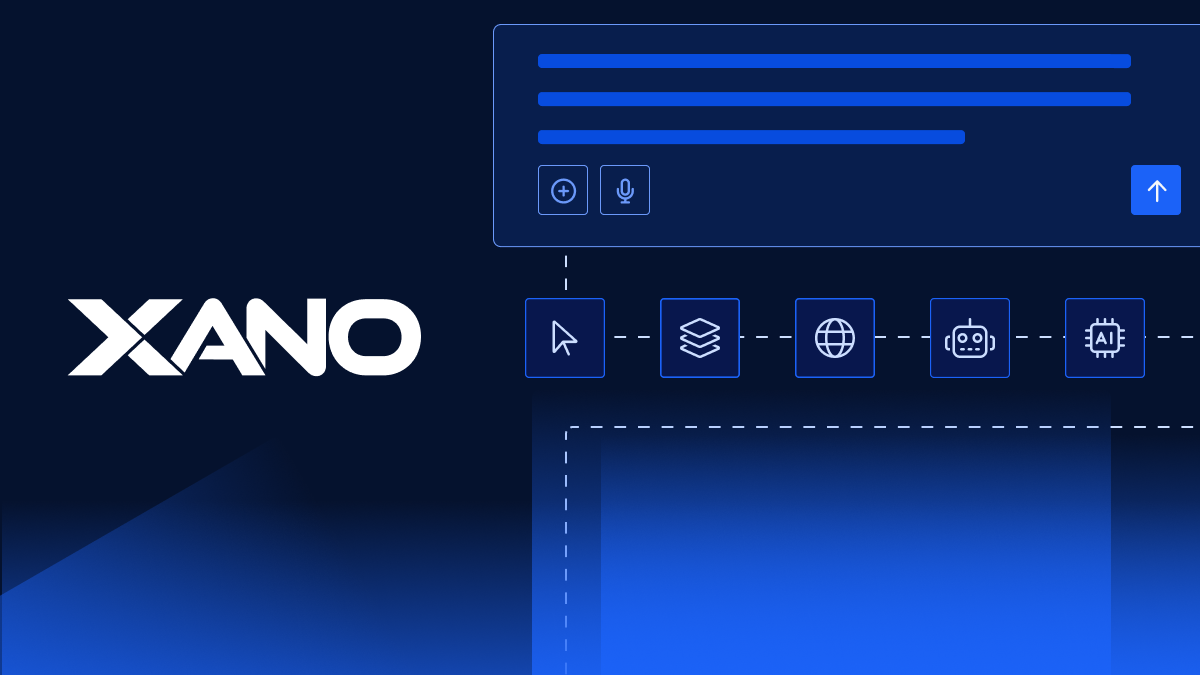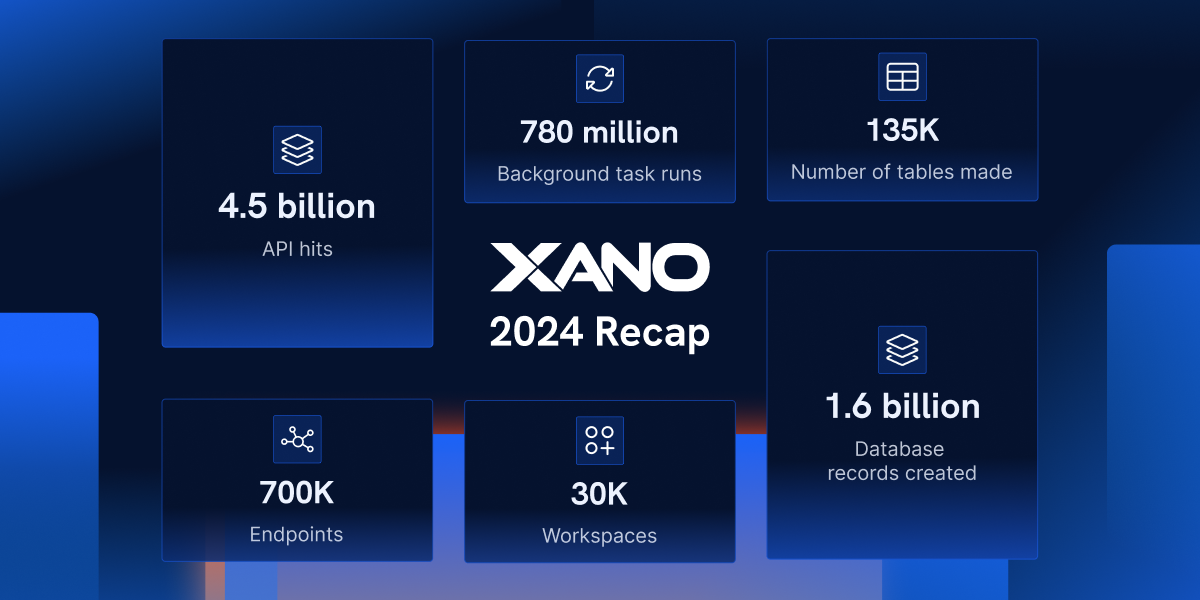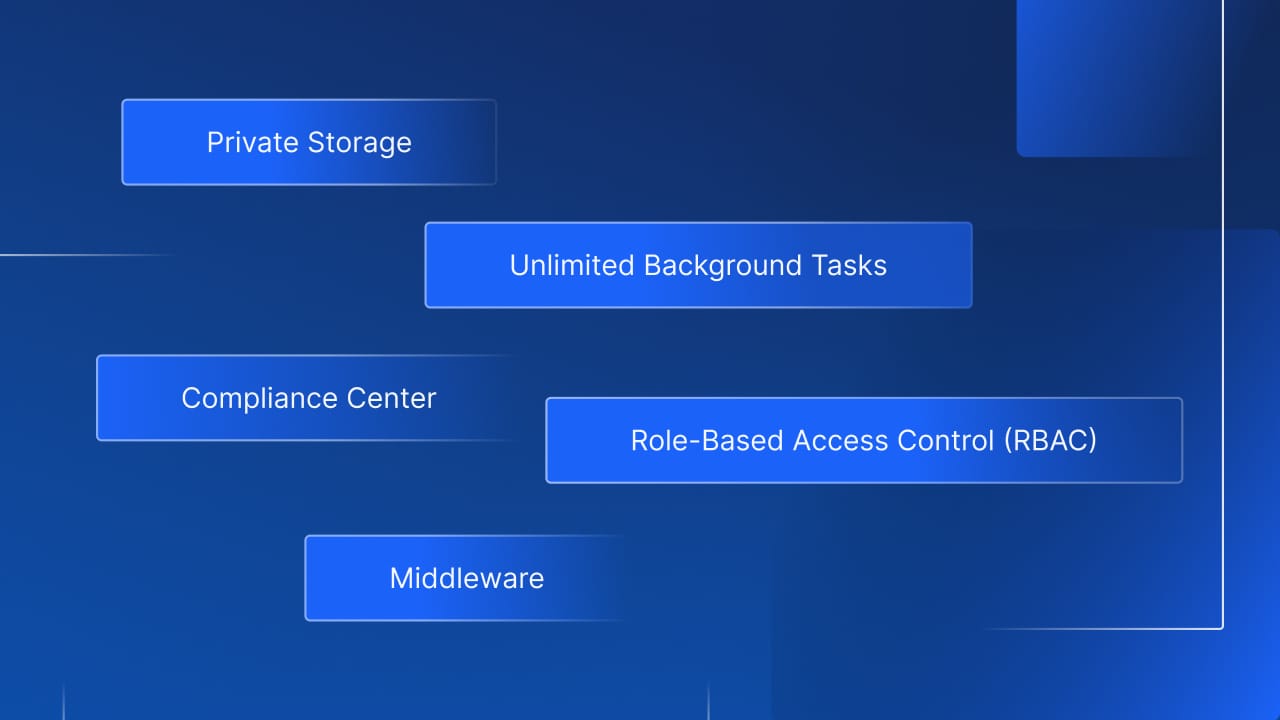SaaS vs PaaS vs IaaS: What's The Difference & How To Choose
By Xano | July 12, 2021

Cloud services are now more or less vital in the business world, although many leaders are still unfamiliar with “X as-a-service” (XaaS) solutions. XaaS subtypes are growing more and more prevalent for everything from app development to ecommerce management, and it is vital to understand the differences between the various options (SaaS vs PaaS vs IaaS).
It can help to look at it through the analogy of a rental car. When you rent a vehicle, you are renting a temporary service rather than purchasing your own car. With X-as-a-Service software, you are paying for a cloud service rather than building your own data-center from the ground up. Think of it as renting a car for your business rather than purchasing a company vehicle.
XaaS platforms eliminate the need to install word processors on computers and save your company significant time and money. The three main sub-models of XaaS are Software-as-a-Service, Platform-as-a-Service, and Infrastructure-as-a-service. Choosing the best option for your company can feel overwhelming, especially if you are unfamiliar with the technology behind cloud infrastructure.
Below, we will break down the differences between SaaS vs PaaS vs IaaS to help you determine what's best for your company.
SaaS: The Basics
Software as a Service (SaaS) is most commonly used for businesses in the cloud market. SaaS provides on-demand use of applications from third-party vendors.
Customers do not need to download any files on their computer to run SaaS applications. You only need to log onto your vendor's website. Examples include Google Workspace, Dropbox, Cisco, WebEx, and GoToMeeting.
Benefits
The main benefit of SaaS is that it is simple to use. You can use the programs on any device that connects to the internet as the programs are exclusively managed by third-party vendors.
In addition to ease of use, SaaS is simple to customize. The majority of businesses can update and tweak their applications without trouble. Most SaaS programs use point-and-click steps, so you can adapt your application as your business needs change without needing to modify an application's core functionality.
SaaS also offers flexible payment options. Users only pay for what they consume and most contracts allow you to end your subscription at any time. However, some SaaS programs have setbacks that can lock you in long term (more on that below).
Drawbacks
Sometimes, SaaS apps are not designed to follow open integration standards, which can make it difficult to integrate with existing apps and services. This means your company may end up designing their own integration systems, which can be time consuming and costly. SaaS vendors also sometimes offer limited integration support.
Data security is also a concern as large volumes of data are exchanged through backend data centers. This means sensitive business information is sometimes transferred in public-cloud based SaaS service.
As SaaS services are controlled and managed by third-party vendors, you may end up with unplanned maintenance and performance issues that are beyond your control. This can cause tension between your company and frustrated customers.
While SaaS service providers are usually flexible about payment and contracts, customers can still get inadvertently locked into a contract. Transferring data across SaaS apps from other vendors sometimes requires paying significant fees or doing in-house engineering work. Always review contracts closely and watch out for these types of stipulations.
PaaS: The Basics
Platform as a Service provides cloud components to certain software and is mainly used for applications. PaaS provides a framework to developers, which they can then build upon to create and customize applications.
Examples include Windows Azure, AWS Elastic Beanstalk, Google App Engine, and OpenShift.
PaaS Advantages
PaaS allows you to build and deploy applications without paying the often substantial costs of computing resources. PaaS services provide everything you need abstracted, so there is no need to manage things like operating systems, servers, and databases within the platform.
PaaS services offer full control of features and tools and users only pay for the services they need. This can save you money you may otherwise expend on extraneous resources.
PaaS also updates easily. The vendor manages all aspects of updates – like re-integrating components – so users can concentrate solely on app development.
PaaS systems frequently offer analytics, which give businesses insights that help them make informed decisions.
Drawbacks
Like SaaS solutions, data security is a major concern when working with third-party, vendor-controlled cloud servers. With PaaS solutions, customers are often unable to deploy their services with specific hosting policies.
PaaS does not usually provide plug-and-play solutions, so your tech team may need to spend considerable time and resources customizing and configuring changes before a PaaS will work with legacy systems.
PaaS solutions often limit operational capabilities for end users, which can result in a loss of operational control. This can make it more difficult for your team to manage and operate PaaS solutions.
Vendor lock-in can also be an issue with PaaS. Business and technical requirements may become incompatible with a specific PaaS over time. If a contract lacks provisioned convenient migration policies, it may be difficult to make a smooth switch to an alternative PaaS.
IaaS: The Basics
Infrastructure as Service (IaaS) provides users with cloud-computing infrastructure. This infrastructure is used to perform necessary tasks and you pay as go for services like storage and processing. It is similar to purchasing computer hardware, but that hardware is kept in an entirely digital environment.
Examples of IaaS include Amazon Web Services, Google Cloud, and Microsoft Azure.
Benefits
In terms of scaling, IaaS is the best option. An Iaas provider can easily provide companies with additional resources as your company grows and their needs evolve.
IaaS is an extended service, while SaaS and the majority of PaaS solutions are on-demand. This means you agree on what is offered ahead of time and work directly with your provider to ensure services meet your needs.
IaaS providers also control resource allocation by tracking what services you use and charging your accordingly. In other words, you only pay for the resources you use.
When using IaaS, you do not need to buy or maintain a physical server.
Drawbacks
Legacy systems can also be an issue with IaaS as infrastructure may not be designed to deliver specific controls. You may need to make enhancements before migrating existing apps, which can sometimes create technical problems and even security issues.
As with SaaS and PaaS systems, security can be an issue. While you generally have more control over things like your apps and OS platform, any security threats to the host infrastructure can potentially compromise the integrity of your data.
The infrastructure of IaaS platforms is less user-friendly than other options. Customers are directly responsible for things like data security and backup, so your team may need additional training when using IaaS.
That brings us to our next point. You have to be very careful about backing up your data with an IaaS system. Users are fully responsible for their own data and a third-party cannot retrieve it for you if it is lost.
Which Solution Should I Use?
Both Saas, PaaS, and IaaS solutions come with unique benefits and limitations and the truth is there are no hard and fast rules regarding which would work best for your specific business. However, there are some general guidelines that can help you get a feel of what might be right for you.
SaaS tends to work best for startups and small companies who need to launch ecommerce platforms quickly. Short-term projects often rely on SaaS solutions as do infrequently used applications (i.e., tax apps) or applications that need both web and mobile access.
IaaS tends to work best for larger companies that prefer to retain full control over their applications and infrastructure. Startups and small companies, however, do sometimes use Iaas solutions to save money on purchasing both hardware and software. As IaaS is easy to scale, it is also a viable option for companies experiencing rapid growth.
PaaS, on the other hand, is often used when multiple developers are working on the same project as it is helpful for streamlining workflows. It is also commonly used for creating highly customized applications.
SaaS vs PaaS vs IaaS: The Bottom Line
Cloud services are not going away any time soon, so being up-to-date on the pros and cons of XaaS options is important to building your business. SaaS, PaaS, and IaaS all come with unique benefits and drawbacks and there is no one-size-fits-all solution that works for every company. To determine what's best for you, take a look at your unique needs.
Looking for solutions for your company? Xano is the fastest No Code Backend development platform on the market. We give you a scalable server, a flexible database, and a No code API builder that can transform, filter, and integrate with data from anywhere. Sign up here to get started.
The post SaaS vs PaaS vs IaaS: What's The Difference & How To Choose appeared first on Xano.

















